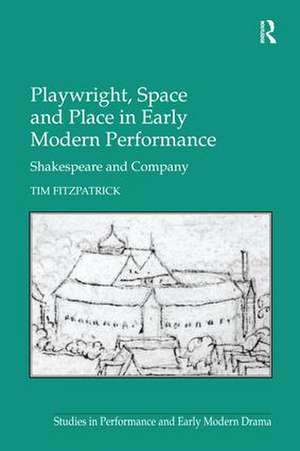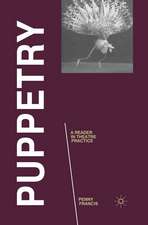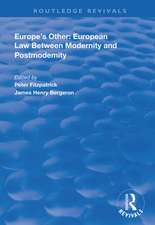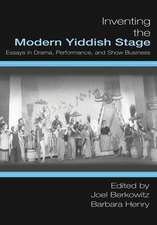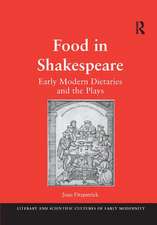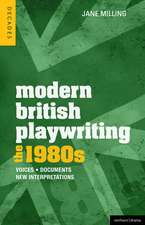Playwright, Space and Place in Early Modern Performance: Shakespeare and Company
Autor Tim Fitzpatricken Limba Engleză Paperback – 17 noi 2016
| Toate formatele și edițiile | Preț | Express |
|---|---|---|
| Paperback (1) | 469.34 lei 6-8 săpt. | |
| Taylor & Francis – 17 noi 2016 | 469.34 lei 6-8 săpt. | |
| Hardback (1) | 1064.19 lei 6-8 săpt. | |
| Taylor & Francis – 28 oct 2011 | 1064.19 lei 6-8 săpt. |
Preț: 469.34 lei
Nou
Puncte Express: 704
Preț estimativ în valută:
89.84€ • 97.62$ • 75.51£
89.84€ • 97.62$ • 75.51£
Carte tipărită la comandă
Livrare economică 21 aprilie-05 mai
Preluare comenzi: 021 569.72.76
Specificații
ISBN-13: 9781138268692
ISBN-10: 1138268690
Pagini: 328
Dimensiuni: 156 x 234 x 18 mm
Greutate: 0.45 kg
Ediția:1
Editura: Taylor & Francis
Colecția Routledge
Locul publicării:Oxford, United Kingdom
ISBN-10: 1138268690
Pagini: 328
Dimensiuni: 156 x 234 x 18 mm
Greutate: 0.45 kg
Ediția:1
Editura: Taylor & Francis
Colecția Routledge
Locul publicării:Oxford, United Kingdom
Notă biografică
Tim Fitzpatrick co-founded the Department of Performance Studies at the University of Sydney. His research concerns the interplay between oral and textual elements in early modern performance: in the Commedia dell'Arte and in Elizabethan theatre.
Recenzii
'Playwright, Space, and Place in Early Modern Performance makes a substantial contribution to early modern theatrical history. It is carefully argued and meticulously documented. It will undoubtedly change the way that scholars and theatrical practitioners think about early modern staging and stagecraft.' Evelyn Tribble, University of Otago, author of Cognition in the Globe: Memory and Attention in Shakespeare's Theatre '... Playwright, Space and Place in Early Modern Performance is an extremely useful study that invites us to consider the complex and exciting ways in which the physical characteristics of stages during Shakespeare’s time both reflected and dictated the playwrights’ ability to guide their audience’s attention through a constantly shifting maze of geographical locations. Scholars, directors, actors, set designers, and others should find a great deal of helpful information in this thoroughly researched and carefully written book.' Comparative Drama '... [Fitzpatrick] conducts an original and interesting inquiry into the spatial conventions of the early modern playhouse.' Around the Globe 'Fitzpatrick assembles his copious evidence intelligently and cogently, providing tables, appendices and simple but well-devised diagrams. Though deeply interested in the physical reality of the theatre, this is not simply a book about theatre design: it is a book about how playwrights tell stories in space and time. Clear in its aims but far-reaching in its ambitions, it makes a significant contribution to the study of the early modern stage.' Theatre Research International '... presents some intriguing speculation surrounding spatial signification on the early modern stage...' Renaissance Quarterly 'Tim Fitzpatrick’s Playwright, Space and Place in Early Modern Performance: Shakespeare and Company is a remarkably thorough scholarly work and the author’s breadth of knowledge is impressive. It is based on well-established methodology, adopting which one
Cuprins
Introduction; 1: Onstage and Offstage Resources in Early Modern Performance; 1: Playwrights Thinking Spatially; 2: What Playwrights Expected Onstage; 3: Bringing the Tiring House into Play; 2: Establishing a Sense of Place and Fictional World; 4: Nominating the Place; 5: Bringing Properties and Place Onstage; 6: The Divided Stage: Observers and Discoveries; 7: Stage Doors as Opposed Signifiers; 3: A Spatially-based Stage-management and Meaning-making System; 8: Stage Doors and Stage Management; 9: Stage Directions and Stage Management; 10: Stage Doors and Ramifications; 11: Space, Place and Meanings
Descriere
Analyzing Elizabethan and Jacobean play texts for their spatial implications, this innovative study discloses the extent to which the resources and constraints of public playhouse buildings affected the construction of the fictional worlds of early modern plays. By clarifying a sixteenth- to seventeenth-century conception of theatrical place, Tim Fitzpatrick adds a new layer of meaning to our understanding of the texts.
